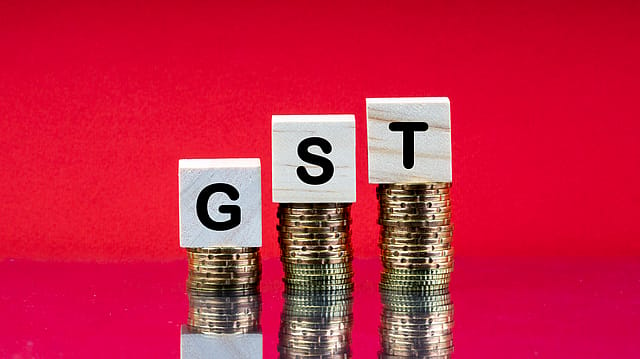GST collection jumps 15% to ₹1.49 lakh cr in December
ADVERTISEMENT

The government collected gross Goods and Services Tax (GST) revenue of ₹1,49,507 crore in December 2022, up 15% year-on-year from ₹1,29,780 crore in the same month last year, the finance ministry's latest data showed.
The monthly GST revenue collection has crossed the ₹1.4 lakh crore mark for the tenth month in a row.
Of the total GST collection, CGST stood at ₹26,711 crore, SGST at ₹33,357 crore, IGST at ₹78,434 crore, including ₹40,263 crore collected on import of goods, and cess is ₹11,005 crore, including ₹850 crore collected on import of goods.
The government has settled ₹36,669 crore to CGST and ₹31,094 crore to SGST from IGST as regular settlement. The total revenue of the Centre and states after regular settlements in December 2022 is ₹63,380 crore for CGST and ₹64,451 crore for the SGST, according to the Ministry of Finance.
During the month, revenue from the import of goods was 8% higher and the revenues from domestic transactions (including import of services) are 18% higher than the revenues from these sources during the same month last year, the ministry says.
During November, 2022, 7.9 crore e-way bills were generated, which was significantly higher than 7.6 crore e-way bills generated in October, 2022.
December 2025
The annual Fortune 500 India list, the definitive compendium of corporate performance, is out. This year, the cumulative revenue of the Fortune 500 India companies has breached $2 trillion for the first time. Plus, find out which are the Best B-schools in India.
The Goods and Service Tax (GST), which came into effect on July 1, 2017, was rolled out to unify India's indirect tax system by removing domestic barriers. Under the GST regime, there are multiple tax rates for different goods—ranging from 0% to 28%, or higher where 'sin taxes' are applied. Prior to the GST, each state set its own sales taxes—in addition to the central government, and trucks were stopped at checkpoints at state borders.
The GST collections have seen significant traction since October 2020. According to India Ratings and Research (Ind-Ra), higher GST collection is due to a combination of three factors – improved compliance, higher nominal GDP due to inflation, and higher imports due to elevated commodity prices.
However, higher GST collections should not be construed as an indication of a rise in consumption demand, the ratings agency said in September. "In real terms, private final consumption expenditure (PFCE; proxy for consumption demand) in 1QFY23 grew 9.9% over 1QFY20, but in nominal terms it grew 36% during the same period. The real and nominal GDP during the same period grew 3.8% and 31.4%, respectively. This clearly suggests the surge in GST collections is more due to the higher inflation than higher consumption," it said.
